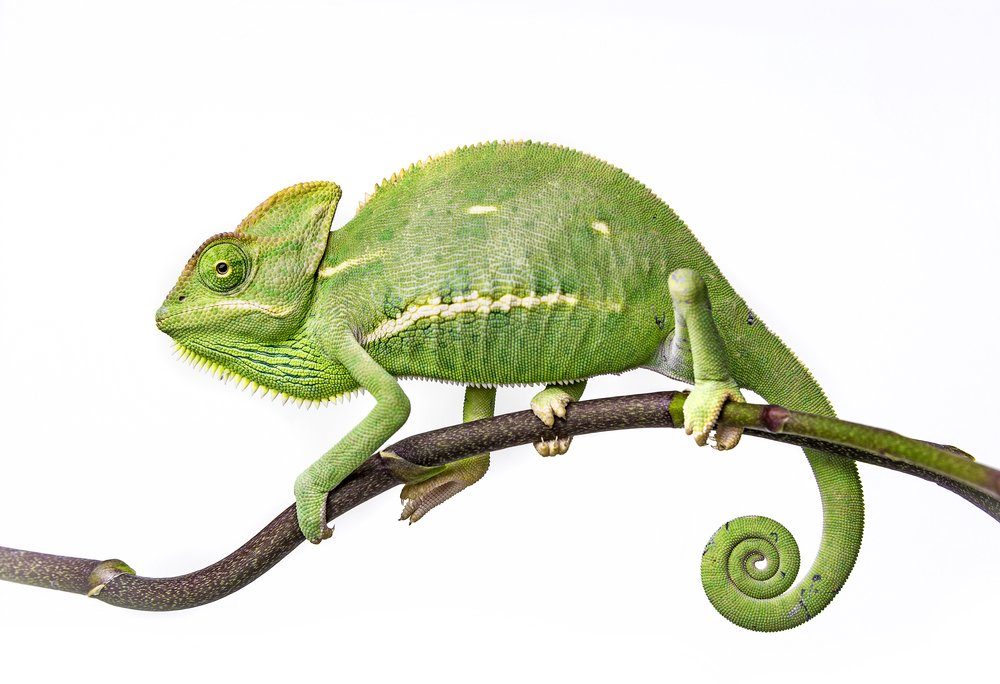Chamaeleo calyptratus
As the name suggests, Yemen chameleons are from the Middle East. They inhabit mostly dry areas at elevations of up to 950m and as such, have evolved large crests to help channel precious water droplets into their mouths. Interestingly, both males and females exhibit this crest which has given them their other common name, the veiled chameleon.
As water is scarce in the environments they inhabit, older chameleons will eat plants and vegetation to ensure they are hydrated. They do very well in a live planted enclosure and many keepers recommend providing Epipremnum aereum which is non-toxic, fast growing and provides perfect climbing opportunities and even an occasional snack.
Because of the harsh conditions on the plateaus and mountainous regions they inhabit, Yemen chameleons can tolerate a range of temperatures. This makes them one of the hardier species of chameleon and has allowed them to become established in Florida as an invasive species.
Interestingly, Yemen chameleons are some of the only reptiles that can be sexed almost immediately after hatching. The males possess spurs on their legs which means breeders can quickly identify hatchlings. This species also grows quickly and males can reach a size of up to 60cm. Both sexes will also develop colourful patterns as they mature. Males will usually develop yellow bands that stretch down their dorsum, while females will have a sporadic spots of yellow, orange or black. These chameleons should be housed separately where possible. This is particularly important for males which will actively harass the female and can lead to extremely high levels of stress.
Keepers should provide excellent ventilation and a hot spot of up to 32°C at the top of the enclosure (with an ambient temperature of around 24°C). This should allow for the animal to move closer or further away from the heat source at will. Temperatures should drop to below 22°C at night.
To mimic wild conditions, a fogger should be used at night. As reptiles see light differently to us, sitting water is often difficult to distinguish so droplets of condensation are helpful. In the wild, moisture levels are much higher at night, peaking just before sunrise, so one minute of misting before lights turn on is a natural way to provide water. This should take humidity up to almost 100% at night and down to around 50% in the day. Yemen has very distinct seasons, so replicating these conditions throughout the year is advised.
If you enjoyed this, sign up to EK for free here.
